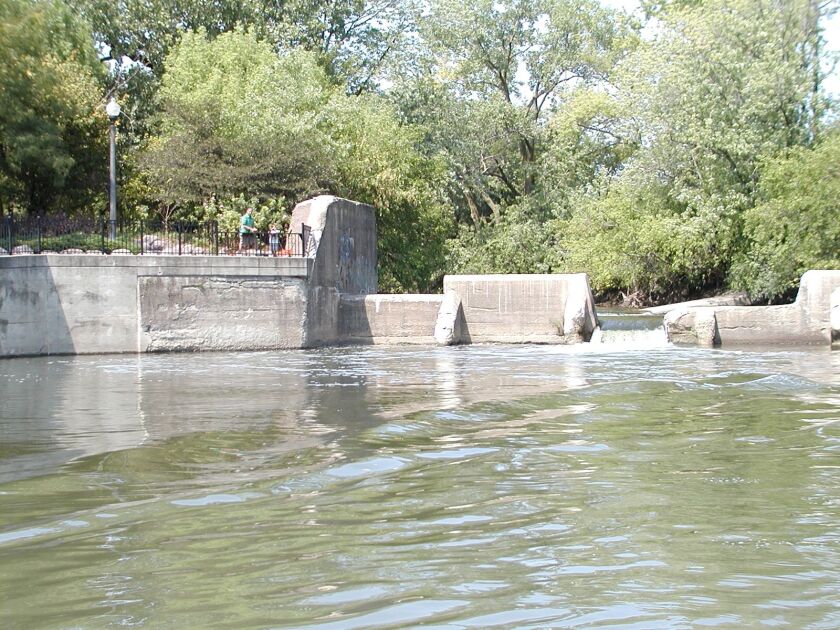As part of my wife’s birthday celebration, she wanted to look for leftover pieces of Riverview. Mind you, she never attended the iconic Chicago amusement park and was 3 when it closed.
“I don’t care if we have to trespass,” she said.
I reminded her that an area police station occupied a chunk of the former grounds. Rooting around, I found that the free-ride bike park, “The Garden,” at Clark Park might have remnants.
We planned New Year’s Eve around looking for her Riverview remnants, then a detour to see the dam removal work south of Foster Avenue at the confluence of the North Branch of the Chicago River and the North Shore Channel at River Park.
Dam removal in general–that one in particular–was among the most important stories in Chicago outdoors in 2018 and will continue to be. Simply, dam removal makes rivers come alive.
First Riverview.
I had only seen Clark Park, notable because of the boat house. from the water. But we figured out how to walk “The Garden.” For those who only bemoan kids, it was kids utilizing “The Garden,” that patch of wildness, that led to the Chicago Park District formally recognizing it.
Gray squirrels scurried through wet leaves around bike jumps and tracks. A kingfisher rattled up and down the North Branch. A muskrat cut a V in the water. Guys walked out-sized dogs on the bike path.
Then we started to find remnants, the best a circular concrete foundation. I wish the park district or Riverview buffs would post signage of what the remnants were.
It sparked my wife’s curiosity enough that later New Year’s Eve she dug up maps, video clips and stories of Riverview.
As darkness gathered, we drove to River Park to see the dam removal.
In the 1980s, an iconic photo was taken of a Chinook salmon leaping over the dam, aka “The Waterfall.” I’ve never gained permission to use the photo or got the straight story on how it was obtained.
We heard the North Branch long before we saw it. A good river should be heard. Good flowing water sounds strikingly similar to the gurgling giggle of a healthy baby.
A blocked-off construction zone around the dam removal made getting a good look tough. I tried fence holes made by anglers on the east bank, then climbed a fence near the fishing structure on the west. I finally found a good angle by coming from the alley off Foster and walking the bridge upstream of the former dam.
It was time.
Heavier rain fell in the dark. I stood on the bridge and listened to the sound of flowing water.
It sounded like history being made.
HUNTING: Blaze pink now meets the same hunting requirements in Illinois as blaze orange with HB4231 taking effect Tuesday.
WILD THINGS: Reports of snowy owls build. Stay alert around the traditional spots.
STRAY CAST: The Baseball HOF ballots I’ve seen so far make me think those voters would be OK with dynamite as legal angling.






